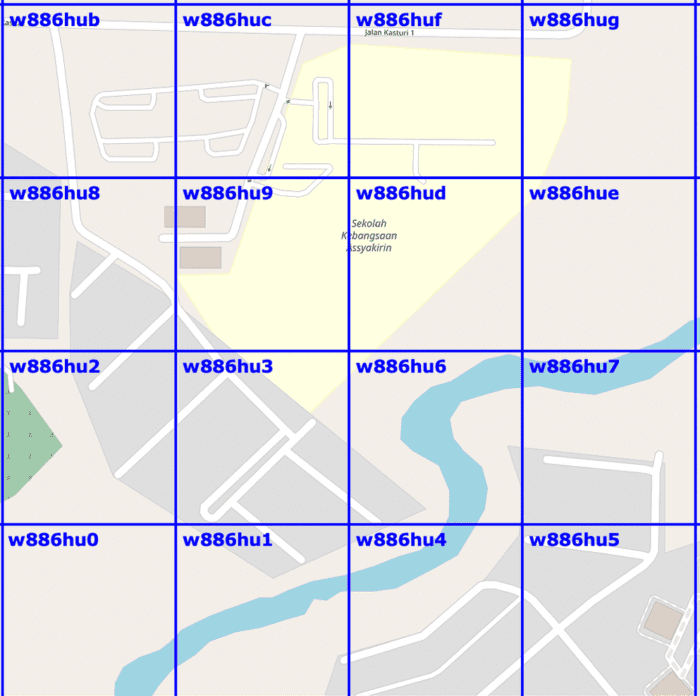How does a Grab driver-partner know a passenger’s exact location when they book a ride? And how does the app identify nearby F&B outlets consumers can order from?
Grab relies on the geohash system to visualise the world in a grid. The geocoding system divides regions into small zones based on latitude and longitude lines. Each of these zones is labelled by a unique geohash, and allows Grab to mark points of interest, determine the distance between riders to drivers, and so on.
The more characters in a Geohash string, the more precise the location.
The geohash system is in the public domain, and was invented in 2008. The way it works is each geohash is identified by a string of letters and digits—the more characters in the string, the more precise the location.
To illustrate, we can divide a given area of a map into a grid with 32 cells. To zoom into a more precise area, the geohash will subdivide the cell into 32 smaller cells and each one of these cells will contain another 32 cells, and so on—that’s how you get longer geohashes the more precise the location.

Points that are close to each other will also share a similar geohash.
Geohashes help Grab figure out fares, ETA, routes, and more
At Grab, geohashes help us see when physical points are close to each other. We can tell that these zones are nearby because they are all in the “w886hu” area.

We use the distance to help figure out things like estimated time of arrival, or fare calculations, so you can see one price before you book a ride with no surprises.
The geohashes of users and drivers can help our system reflect a more realistic fare. The location of a passenger checking for fares can be mapped to available drivers in the vicinity. Price is then decided based on real-time demand and supply.
Occasionally, you get buildings that are next to each other falling within different zones. That’s why fares can differ when you map a route to one building that’s just across the street from another. We’ve been working on keeping the variance in fares small between pick-up points that are very close to each other.
When users enter their pick-up location, the app can allow them to pick a landmark nearby that might be easier to identify in real life.
Outside of route calculations, geohashes also support many of the core features on Grab including identifying points of interest. For example, when users enter their pick-up location, the app can retrieve records of places on the map, so they can pick a landmark nearby that might be easier to identify in real life.
We are also constantly adding new POIs to help our driver-partners locate customers quickly or to ensure our merchant database is updated. With accurate geohashing, our system can automatically see which parts of a city’s map might be lacking. This allows our operations teams to send out more field collectors on the ground.
In some cities, we have regular job boards that send out collection requests to our driver-partners, allowing them to pick up additional mapping gigs where they are to supplement their income.
3 Media Close,
Singapore 138498
Komsan Chiyadis
GrabFood delivery-partner, Thailand
COVID-19 has dealt an unprecedented blow to the tourism industry, affecting the livelihoods of millions of workers. One of them was Komsan, an assistant chef in a luxury hotel based in the Srinakarin area.
As the number of tourists at the hotel plunged, he decided to sign up as a GrabFood delivery-partner to earn an alternative income. Soon after, the hotel ceased operations.
Komsan has viewed this change through an optimistic lens, calling it the perfect opportunity for him to embark on a fresh journey after his previous job. Aside from GrabFood deliveries, he now also picks up GrabExpress jobs. It can get tiring, having to shuttle between different locations, but Komsan finds it exciting. And mostly, he’s glad to get his income back on track.

